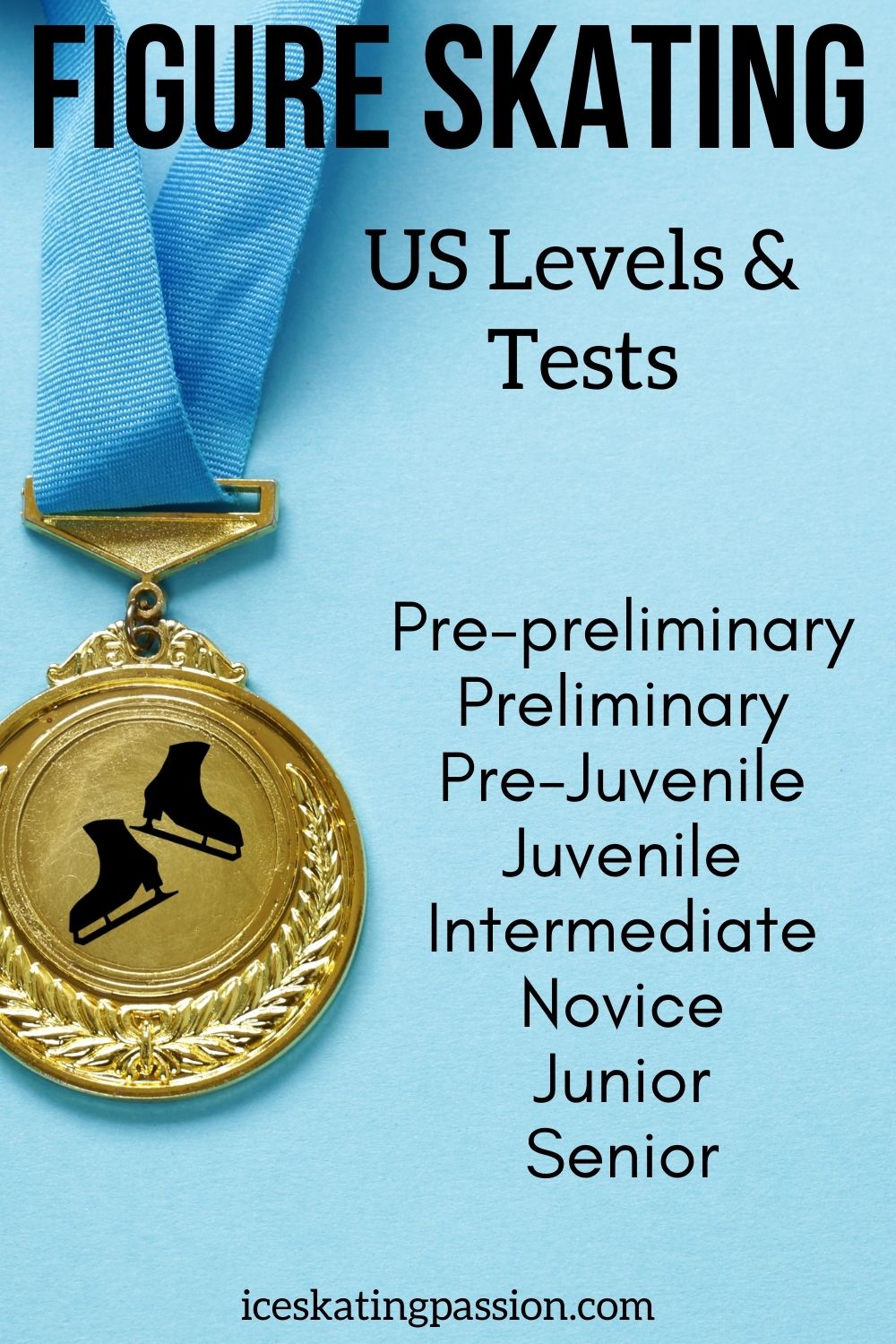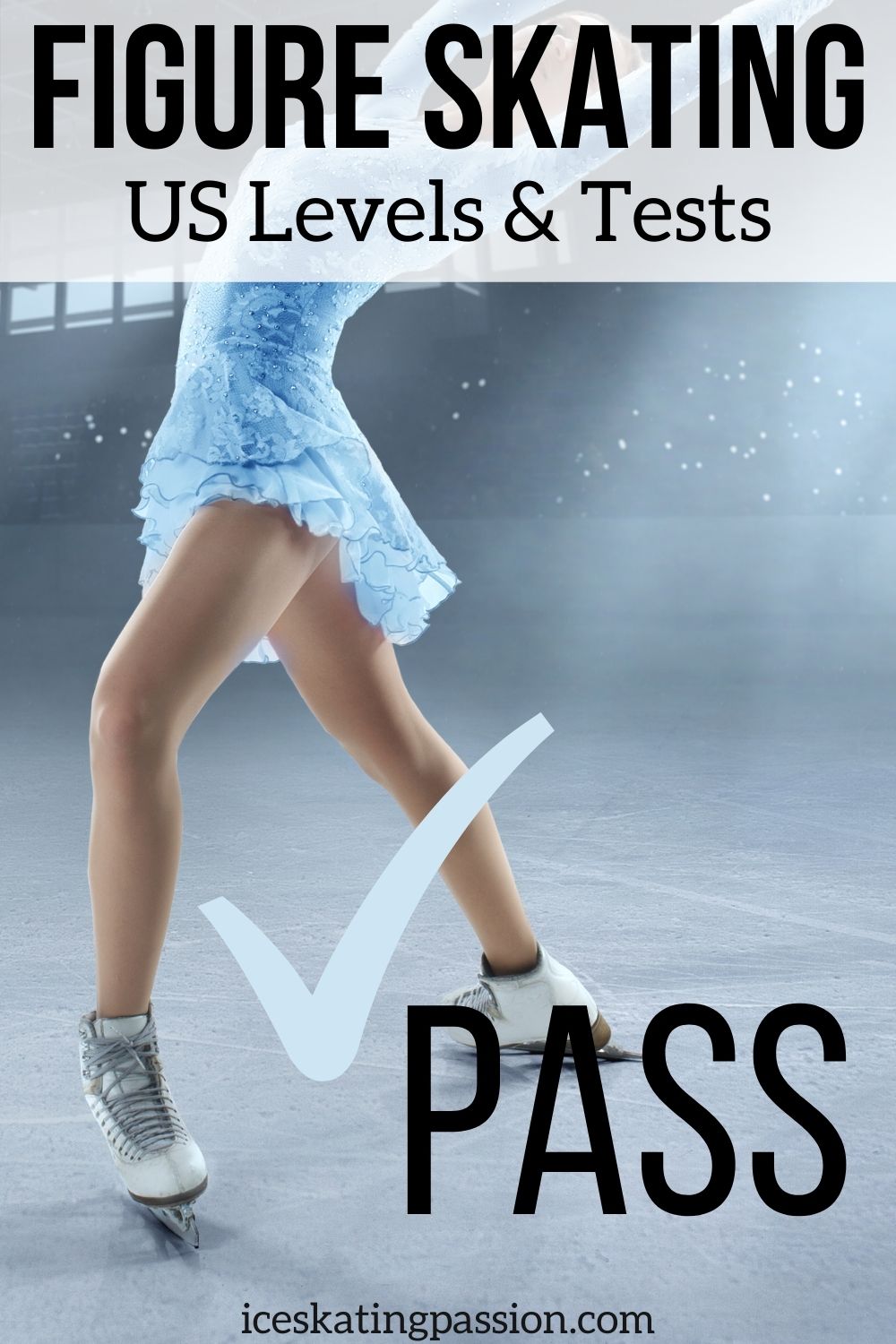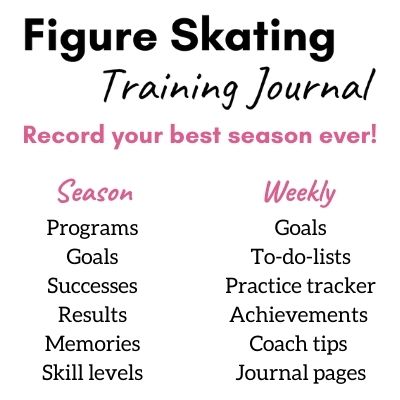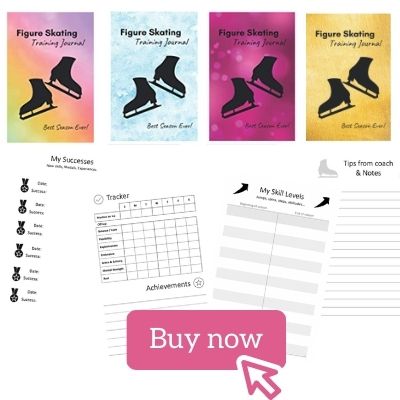Getting confused with all the figure skating levels in the US? Want to better understand the evolution, requirements, test systems and classic ages. Below is a guide to better understand the US ice skating levels and skills.

This article contains affiliate links. If you purchase using my link, I get a commission at no extra cost to you (learn more).
Figure skating Levels and tests - Introduction FAQs
How many levels are there in figure skating?
There is a hierarchy in figure skating. Levels have been predefined.
For all disciplines of figure skating there are between 6 and 8 official levels
They are based on technical difficulty, with required technical moves and program requirements.
To move from one level to another you take a test.
Note: for beginners there are also 8 "pre-levels", to test progress on basic ice skating skills.
I am listing the various levels and skills in further sections.
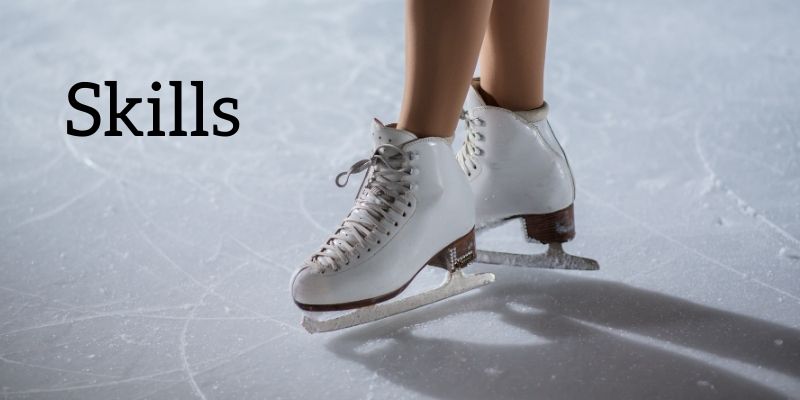
Why take figure skating level tests?
There are 2 main reasons why you or your kid should take figure skating tests:
- To be able to enter qualifying competitions and if you do, check out my competition checklists
- To challenge the skater, have a goal during practice and improve skating abilities
How do you take ice skating tests?
There are 2 ways to take ice skating test
- During scheduled test sessions organized by figure skating clubs (more frequent for lower levels, less as you progress)
- By submitting a competition protocol from a sanctioned competition for free skate and free dance (juvenile-senior levels and selected adult levels)
The standards (skills, expectations, rules) for all tests are specified in the current version of the U.S. Figure Skating Rulebook.
You can take tests for
- Moves in the Field - technical tests for figure skater solos and pairs - To master the positions, edges, and turns necessary for figure skating
- Free skate
- Free dance
You must have passed the Moves in the Field of a certain level before being able to take the Free skate of that same level.
Certificate and Badges
When passing, the skater gets a certificate and a badge from the figure skating club on behalf of the U.S. Figure Skating Association.
The names of skaters who have passed the test are as also listed on the U.S. Figure skating website.
As a skater advances, the tests become more difficult, so each test passed is a definite cause for celebration.
You can also purchase medals and pins for yourself or your kid.
Or if you are looking for something different check out my gifts for these occasions. They can be personalized with the name of the skater (or with a club name), the level and the year:
See my Zazzle collection of figure skating test congratulatory gifts or check out more ideas at the end of the article
What if I or my kid fail an ice skating test?
This can be disappointing, but it is not dramatic.
You can take and re-take the same test as many times as you need to pass (with an interval of 28 days between each attempt).
Your coach or the comments on the form can tell you the reason why you failed. Keep practising and enjoy the journey!
US Figure skating vs ISI
In the rink closest to you, you may learn about different levels as those listed in this article (alpha, beta... ISI levels 1 to 10).
Those levels have been established by the ISI (Ice Skating Institute).
What is the difference and implication you may ask?
- The US figure skating is the national governing body for figure skating in the States (recognized by the International Skating Union (ISU) and the Olympic Committee).
- The Ice Skating Institute is an organization of participants of all aspect of the sport (ice rink owners, instructors, trainers, builders, suppliers...) to support the development of ice rinks and provide and promote ice skating.
- They both allow participation is competitions they organize under certain conditions such as membership, for example.
- There are correspondences between test levels
This article focusses on the US Figure skating levels.
What are "Gold Medalists"?
Figure skaters that pass some of the highest tests in figure skating become U.S. Figure Skating Gold Medalists e.g.:
- Senior Freeskating
- Senior Moves in the Field
- Gold Dance
- Senior Free Dance
- Senior Pairs
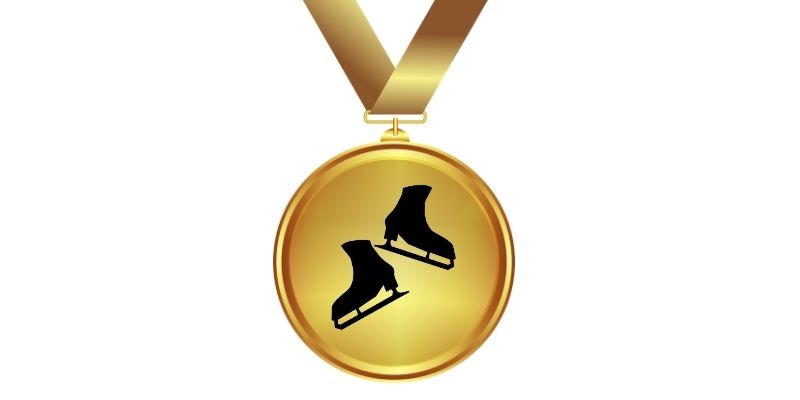
Adaptative skating
There are also levels and tests for adaptative skating.
Learn more on the US figure skating website.
Basic ice skating levels - beginners
Even before you start going through the Figure skating level tests, kids can have goals and see progress thanks to ice skating teaching systems with levels.
Ice skating moms, you should know that the 2 most commons taught in group sessions are:
- The Snowplow Sam (4 levels)
- The Basic Eight (8 levels)
These give you a good common basis for all disciplines of figure skating. Once you have passed them all you can choose to specialize: single, pairs, ice dance, synchronized skating.
Not one system is better. Just follow the one available at the rink.
The Snowplow Sam
4 progressive levels to introduce the basics of ice skating to those who have never skated before: Agility, Balance, Coordination and Speed, with learntoskateUSA.
Its image is a fuzzy bear. Designed for kids typically between 3 and 5 years old.
Snowplow Sam 1
- Sit and stand up with skates on – off-ice
- Sit and stand up – on-ice
- March in place
- March forward (8-10 steps)
- March, then glide on two feet
- Dip in place
Snowplow Sam 2
- March followed by a long glide
- Dip while moving
- Backward walking, toes turned inward, shifting weight (4-6 steps)
- Backward wiggles (6 in a row)
- Forward swizzles (2-3 in a row)
- Beginning snowplow stop motion – in place or holding onto barrier
- Two-foot hop, in place (optional)
Snowplow Sam 3
- Forward skating (8-10 strides)
- Forward one-foot glide, two times skater’s height (R and L)
- Forward swizzles (4-6 in a row)
- Backward swizzles (2-3 in a row)
- Moving forward snowplow stop (two-foot)
- Curves
Snowplow Sam 4
- Forward skating
- Backward two-foot glide, length of skater’s height
- Backward swizzles (4-6 in a row)
- Rocking horse – one forward, one backward swizzle, repeat twice
- Two-foot turns from forward to backward, in place (both directions)
- Two-foot hop, in place
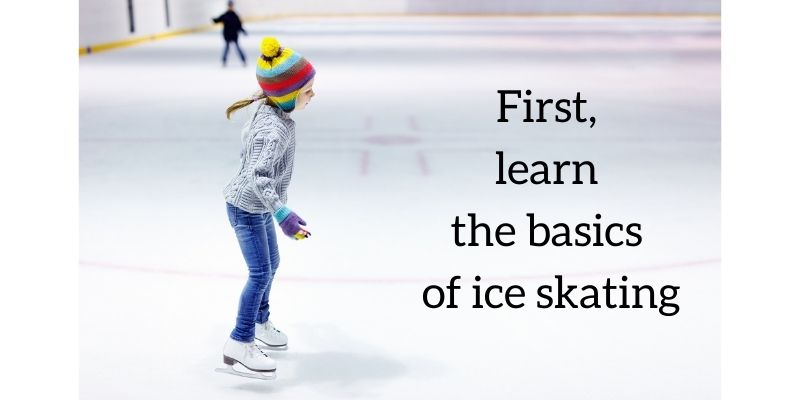
The Basic Eight ice skating levels
This Learn to skate USA program introduces skaters to the fundamentals of ice skating such as forward and backward skating, stops, edges, turning and more, as well as fundamentals techniques for jump and spin. This is applicable to all ages in order to learn the essentials before diving in the world of figure skating dances.
Basic 1
- Forward two-foot glide
- Forward two-foot swizzles 6 -8 in a row
- Forward snowplow stop
- Backward wiggles 6-8 in a row
Basic 2
- Forward one-foot glide – either foot
- Forward alternating ½ swizzle pumps, in a straight line -across width of ice rink
- Two-foot turn in place forward to backward
- Backward two-foot swizzles 6 – 8 in a row
- Moving snowplow stop
Basic 3
- Forward stroking
- Forward ½ swizzle pumps on a circle, either clockwise or counterclockwise 6 – 8 consecutive
- Moving forward to backward two-foot turn – either direction
- Backward one-foot glide – either foot
- Two-foot spin
Basic 4
- Forward outside edge on a circle clockwise or counterclockwise
- Forward crossovers 6-8 consecutive both directions
- Forward outside three turn – R & L
- Backward stroking
- Backward snowplow stop – R or L
Basic 5
- Backward outside edge on a circle clockwise or counterclockwise
- Backward crossovers 6-8 consecutive – both directions
- One-foot spin – minimum of three revolutions
- Hockey stop
- Side Toe hop - either direction
Basic 6
- Forward inside three turn – R & L from a standstill
- Bunny Hop
- Forward spiral on a straight line – R or L
- Lunge – R or L
- T-stop – R or L
Basic 7
- Forward inside open Mohawk – R to L and L to R
- Ballet Jump – either direction
- Back crossovers to a back outside edge landing position clockwise and counterclockwise
- Forward inside pivot
Basic 8
- Moving forward outside or forward inside three turns R & L
- Waltz jump
- Mazurka – either direction
- Combination move – clockwise or counterclockwise – two forward crossovers into FI Mohawk, step behind, step into one back crossover and step to a forward inside edge
- Beginning one-foot upright spin – optional free foot position
Figure skating levels & ages (single and pair)
Names of the figure skating levels for singles and pairs
For singles and pairs, the skaters have to progress through the following levels:
- Pre-Preliminary
- Preliminary
- Pre-Juvenile
- Juvenile
- Intermediate
- Novice
- Junior
- Senior
For each level, you can validate Moves in the Field and Free Skate.
What are moves in the field?
They test the skater’s ability to perform patterns on the ice, focusing on
- accuracy,
- posture,
- bilateral movement,
- extension,
- edge quality,
- continuous flow,
- turn execution.
Mastering these skills is essential.
Each level in Moves in the Field consists of 4 to 6 set patterns that must be performed by the skater:
- clockwise and counterclockwise
- on both the right and left foot
- on both inside and outside edges
Diagrams are available in the US figure skating rulebook (at the end - MITF section and page numbers - after page 316).
Patterns are different for adaptative skating.
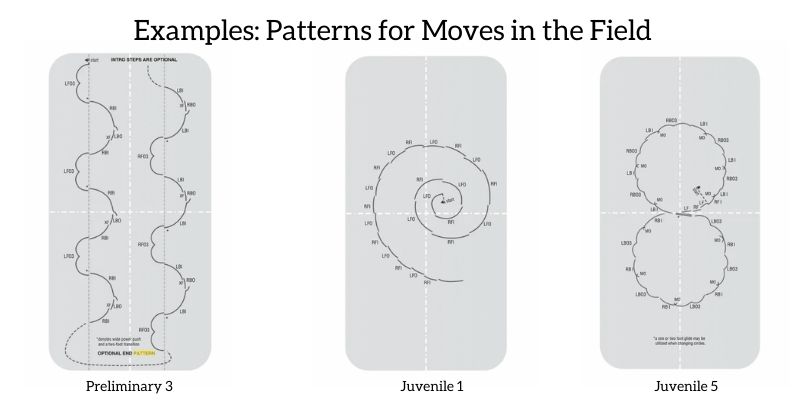
All diagrams available in the US figure skating rulebook
Figure skating free dance test - correspondence with jump levels
For free dance tests, the program (to music) must be presented with some requirements in terms of Jump, Spins, Moves and Combos.
To give you an example some of the requirements per level are:
- Pre-preliminary: waltz jump, salchow, toe loop, half flip, half lutz, 3 revolution one-foot spin
- Preliminary: waltz jump, salchow, loop, flip, combo waltz + toe loop, 3 spins including a sit spin... - 1min 30
- Pre-juvenile: loop, flip, lutz, combo with toe loop as second jump, camel spin, camel to sit spin... - 2min
- Juvenile: Axel plus 2 other single jumps, Combo with 2 single jumps, several spins including an attitude spin and a spin combo... - 2min15
- Intermediate: axel, loop, flip, lutz, 1 double jump, several jump combos including a combo double - single, sit spin with foot change, flying camel... - 2min30
- Novice: Double Salchow, double toe loop, double loop, combo of 2 double jumps, spins, step sequences... - 3min (ladies) and 3min30 (men)
- Junior: 3 different double jumps including a double flip, compo of double jumps, circular step sequences... - 3min30 (ladies) and 4min (men)
- Senior: at least 4 different double or triple jumps, combo with double jumps, 4 different spins, serpentine step sequence... 4min (ladies) and 4min30 (men)
All requirements are listed in the US figure skating rulebook
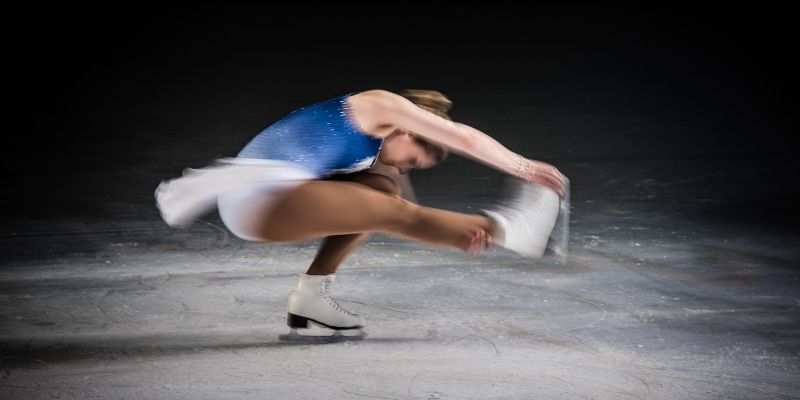
How long between tests?
It depends on the skaters. Some progress more rapidly than other.
Often, it is faster to progress through the first ones - six months to a year or more.
However, it becomes more complicated as the skater progresses, and some levels can take 2 to several years.
Doing some off-ice training can help progress on the ice. See my article for suggestions.
Figure skating levels and ages
It is uncomfortable to answer this question. Many people want that perfect, that perfect number... There is no standard. The most important is to have fun.
However, I will try answering with general info. Just don't take those as "Must-do".
There are no rules for the best age to pass certain tests.
It is fun at all age! Plus, there is even a separate track for adults.
However, to be able to compete, some competitions may impose age restrictions for each level (on non ISU competition) so that an 18 year old would not compete against a 12 year old in juvenile for example. Make sure to check the rules beforehand.
Typical progression for a kid who started young with competition drive:
- Pre-preliminary - 6 to 7
- Preliminary - 7 to 8
- Pre-Juvenile - 8 to 9
- Juvenile - 9 to 10
- Intermediate - 10 to 12
- Novice - 12 to 14
- Junior - 14 to 16
- Senior - past 16
For those skaters, going through tests is a strategy. It depends on which category they want to compete in. It will be decided with the coach. Senior moves can be passed at 12 years old...
Typical progression for most kids enjoying recreational figure skating:
- Pre-preliminary - 6 to 8
- Preliminary - 8 to 10
- Pre-Juvenile - 10 to 12
- Juvenile - 12 to 14
- Intermediate - 14 to 17
- Novice - 17 to 18
- And then studies often come in the way
However, kids can start later and still go through those levels and progress faster.
Johnny Weir began (USA) skating at the age of 12. He gained fifth place at the 2006 Olympics and sixth place in the 2010 Games.
Check out my article about the best age to start ice skating.
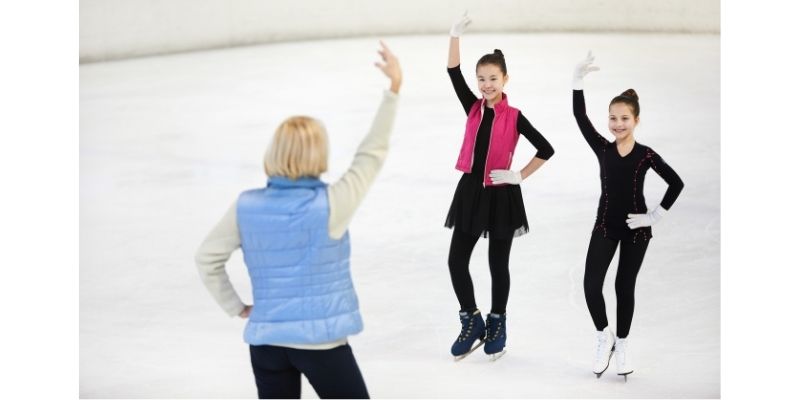
Ice Dance Levels and Test
Names of the figure skating levels for ice dance
In the US, for ice dance, the structure is different:
- Preliminary
- Pre-Bronze
- Bronze
- Pre-Silver
- Silver Dance
- Pre-Gold
- Gold
- International
For each level, Moves in the fields are replaced by compulsory pattern ice dances to music (at least 3) and free skates by the free dance.
Test can be passed solo or partnered.
Compulsory pattern ice dances
In the US, for ice dance, the structure is different:
- Preliminary - Dutch Waltz, Canasta Tango, Rhythm Blues
- Pre-Bronze - Swing Dance, Cha Cha, Fiesta Tango
- Bronze - Hickory Hoedown, Willow Waltz, Ten-Fox
- Pre-Silver - Fourteenstep, European Waltz, Foxtrot
- Silver Dance - American Waltz, Tango, Rocker Foxtrot
- Pre-Gold - Killian, Blues, Paso Doble, Starlight Waltz
- Gold - Viennese Waltz, Westminster Waltz, Quickstep, Argentine Tango
- International - Austrian Waltz, Cha Cha Congelado, Finnstep, Golden Waltz, Midnight Blues, Ravensburger Waltz, Rhumba, Silver Samba, Tango Romantica, Yankee Polka
Diagrams are available in the US figure skating rulebook (at the end - MITF section and page numbers - after page 316).
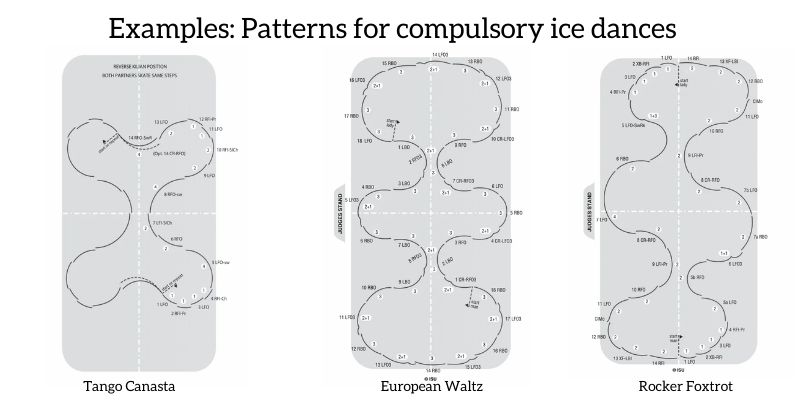
All diagrams available in the US figure skating rulebook
Ice dance levels and age
The evolution is similar to the ones explained above in the single and pair figure skating section.
Adult Figure Skating Tests
Moves in the field and free skate for adults
Adult free skate and moves in the field tests are divided into eight levels:
- pre-bronze
- bronze
- silver
- gold
And then the standard track if they want:
- intermediate
- novice
- junior
- senior
The adult pre-bronze through gold tests is normally equivalent to the classic pre-preliminary through juvenile tests.
However, note that adults don't have to follow the adult track. They can choose the standard or adult track.
The Adult test can be taken with age-appropriate expectations by
- adults 21 and older
- adults 50 and older
Ice Dance for adults
The pattern ice dance track can be followed the same way by adults 21 and older and adults 50 and older. However, the expectations will be age-appropriate.
The only difference is for the free dance taken as a couple, it is only 4 levels: pre-bronze, bronze, silver and gold.
Synchronized skating levels
At the moment there are no tests for teams to pass and validate their level.
However, to compete inside a synchronized skating team, certain levels of move in the field, free dance or ice dance can be required.
For example all skaters of a Novice synchro team must have passed the intermediate moves in the field test.
Learn more here.
Figure skating test GIFT IDEAS
As I wrote earlier, you can purchase the certificate and badge. Or you can purchase a medal or pin.
However, if you want to celebrate with something a little more special, below are my suggestions.
See my Zazzle collection of figure skating test congratulatory gifts.
They can be personalized with
- The name of the skater (or the name of the club)
- The level that has been passed
- The year of the test
Keychain to personalize the ice skating bag
Magnets to decorate the bedroom
Yard Signs
Cake topper if your throw a party
Journals on the figure skating theme
See more ideas on my article.
A training journal to train on the next level:
You might also be interested in:
